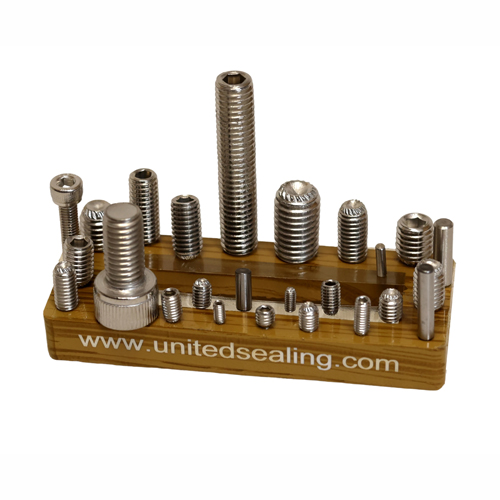Have questions before you get started?
Our team is here to provide the answers and support you need.
Grub screws, also known as set screws, are a type of fixing screw that’s most often used to join one component or part securely to another.
The design of grub screws means they’re intended to offer this secure gripping or joining facility without the use of a nut, as opposed to the typical arrangement found with most bolts. Despite this key difference, grub screws effectively function much the same as a bolt in practice. Because they’re fully threaded and designed to be driven into an existing tapped hole or socket – rather than driven into the surface, creating a new hole – they’re commonly considered a type of bolt, albeit with a few key differences.
The most obvious point of distinction between grub screws and other types of standard screws and bolts is that true grub screws tend not to feature a protruding head. Instead, they’re usually threaded right to the top, and are the same diameter all the way along their length, meaning that the grub screw can be fully driven into its hole to sit flush with (or even countersunk into, depending on the application) the workpiece.
Flat-end grub screws in which the end opposite the head makes a simple flush contact between the parts being joined.
Domed point end grub screws which offer a slightly pointed or tapered tip that provides more pressure at the point of contact (due in part to encouraging a small degree of elastic deformation, as well as the more concentrated pressure zone)
Cone point tip grub screws which are ideal for exerting additional force when joining items made from softer materials, or to fit into an existing depression in the piece being mated to
Cup point grub screws which offer much the same function as cone point varieties but can be driven still further to provide even more torque and gripping force.
Knurled point grub screws: which do much the same as cup point versions but also feature a serrated end for additional friction/grip.
Dog point grub screws which have a slightly narrower diameter shaft protruding from the grub screw opposite the head end – these functions as a sort of spindle or pivot, similar to those found on certain rivets, and can be used to insert into or support other components/pieces of equipment that are required to rotate around it.

Our team is here to provide the answers and support you need.

We provide engineered solutions to various engineering industries for their demanding applications.
+91-98205 16718
+91-99876 97270
unitedsealing@gmail.com
sales2@unitedsealing.com
Jogeshwari West, Mumbai, Maharashtra, INDIA
Sign up our newsletter to get update information, news and free insight.